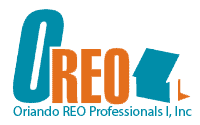Any company must acquire additional assets for various reasons, whether for increased operation efficiency or just general growth. Before doing this, a company must develop an asset acquisition strategy. As the name suggests, an asset acquisition strategy is a strategy that focuses on acquiring assets as opposed to stock in other companies.
In this scenario, the assets acquired and transferred include tangible assets such as production equipment and intangible assets such as brand names, patents, and intellectual property. When assets of this kind are acquired, they are often considered assets of one company sold to another company. This is critical during an asset acquisition because it allows the company to accrue assets, but not liabilities and debt.
In this article, we’ll shed some light on the intricacies of an asset acquisition strategy. Read on below to get started.
Why Asset Acquisition Is Important
The main advantage of asset acquisition is that it enables a company to expand its operations by acquiring assets without buying another company’s stocks. When an asset acquisition does not include the stocks of companies, this allows the company to maintain a relationship with the stockholders. The relationship between the acquired company and the acquiring company can be maintained through the continued issuance of stocks or the exchange of assets. This may leave the stockholders choosing between either holding onto their stocks or receiving assets.
Another advantage of asset acquisition is that it allows companies to increase their value. This is often accomplished by acquiring lower-cost assets or more valuable and profitable investments. All purchases are essential components of an effective asset acquisition strategy in this context.
Choosing the Right Assets
When developing an asset acquisition strategy, it is good to choose valuable assets for the company. The company must select investments that can generate extra revenue, influence the market and take advantage of growth opportunities. When selecting the right assets, it’s essential to determine whether or not the investment is worthwhile.
All assets that the company chooses must be carefully evaluated to determine whether or not they are worth the money used to purchase them. The company can use the following process to determine if the assets are worth the money.
All other assets should be evaluated to determine if they can impact the market. The company should consider the impact that different assets will have on the market and whether or not the acquisitions will help the company grow.
Asset Purchasing Price
When purchasing assets, it’s essential to consider the price offered for the assets. The purchase price is usually determined using a process known as the “asset value.” The asset value is the profit that the company can expect to generate once it has purchased the assets. The company should buy assets only if the profit generated from the asset acquisition exceeds the purchase price.
A company can take several steps to lower the purchase price of assets if the purchase price is higher than the asset value. One option is to offer a lower price than the asset value. The asset value is one of the purchase price components, and if the company has a lower price, the asset value will be lower. This way, the company can get more value out of its investment.
Another option is to offer the purchase price in installments. This is similar to the prospect of offering a lower price, but it is implemented uniquely. The company’s offer will include a lower purchase price but require the buyer to pay the purchase price in installments. This way, the buyer will pay either the total purchase price or the installment payments.
Leveraging an Asset Acquisition Strategy
A company can leverage its asset acquisition strategy to acquire a wide range of assets. The assets that are acquired can include both tangible assets and intangible assets. When an asset acquisition strategy is leveraged, the company can acquire multiple purchases to generate greater profits. A company can also leverage an asset acquisition strategy to acquire assets that are considered to be highly valuable.
The acquired assets can be used to make the company more efficient. As previously mentioned, this is one of the main advantages of an asset acquisition strategy because it allows the company to increase its efficiency without acquiring another company’s stocks. The company can use the assets acquired to improve its sales and marketing, develop new products and services, reduce production costs, and enhance the overall profitability of the business.
Conclusion
An asset acquisition strategy is an excellent way for any company to expand its business. By developing an effective asset acquisition strategy, the company can integrate new assets into its operations and take advantage of the available opportunities.
Properties are also assets, so you need to manage them effectively. Orlando REO Professionals provides top-quality services for property management in Sanford, Florida, to ensure that your assets will be in their best condition to maintain a steady flow of cash. To get started, you can call us at 407-247-8559 or email us at info@o-reo.net!

